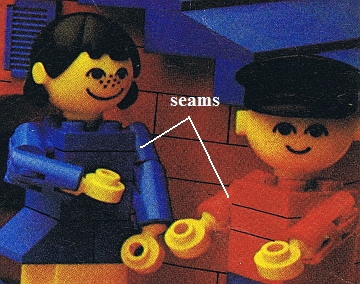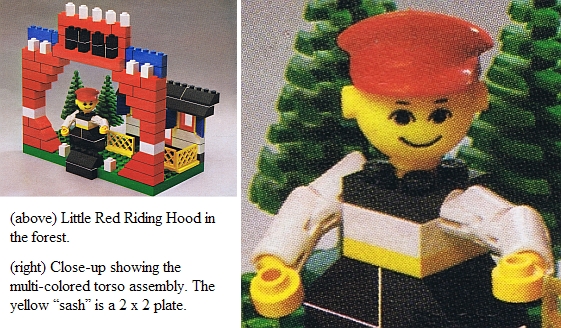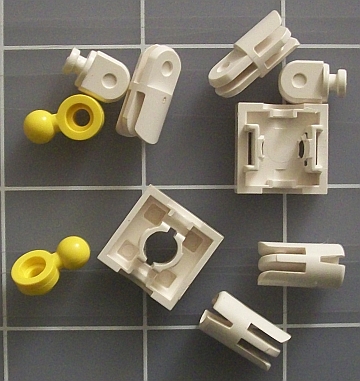| | About Me | Lego Catalogs | Details, details
There can be so much more to a Lego catalog than what at first meets the eye. Notice this close-up shot from the cover of the 1977 Canadian catalog:

Not only is it peculiar that seams between pieces have been drawn in (this is rare in catalogs), but the seams between the two halves of the torsos are also drawn in.
It is highly unusual for these torsos to be taken apart - one would need a very fine knife to do this - and there is only one example I have seen where official Lego instructions would require it (see Idea Book 222, p. 26 or Idea Book 2, p. 24):

So why the seams on the Canadian catalog cover? Was it a mistake? There are plenty of examples of misdrawn seams in Lego instructions from this time period. But the answer is rather more interesting still...
A practice unique to the Canadian market
In most Lego markets large figures always came completely preassembled - head, torso, arms, and hands. In Canada, however, the torsos came in four pieces and were packed in sealed plastic bags together with the rest of the figure pieces:

This is the reason there are differing piece counts for the Farm Set #190, which was distributed in both the USA and Canada. Sets typically had piece counts printed on the box in these two countries, so it makes for a handy comparison.
In the US, the piece count for set #190 was 526. In Canada it was 538 - a difference of 12. This is accounted for by each torso assembly being divided (an extra 3 pieces per torso), and the total number of torsos in the set (4). 3 x 4 = 12.
And this Canadian practice of distributing the torsos in pieces is reflected clearly on the front page of one of their catalogs. This of course is only one example of what I find so interesting about Lego catalogs. There are many, many things to be learned about the Lego company and about their product simply through close observation of the literature they produced. And there are some things that would be hard to discover any other way. | | This page has been viewed 755 times. |
|